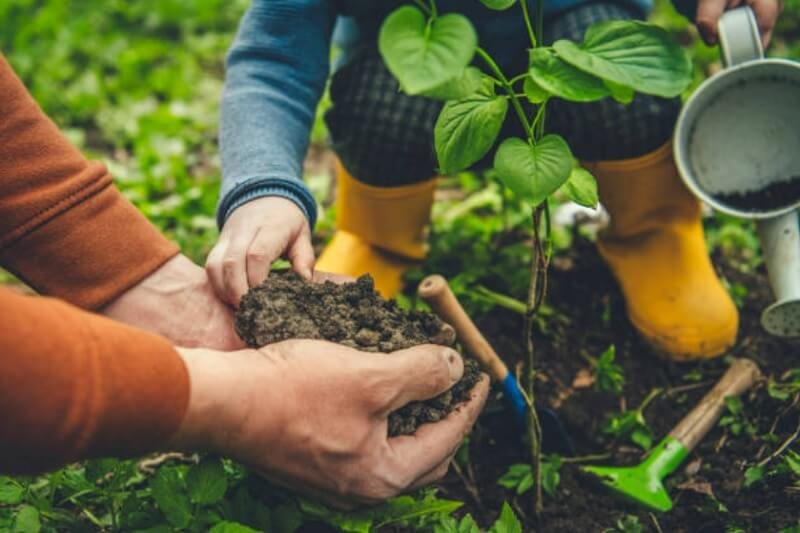Introduction
Trees are major elements of the natural fabric, adding the most essential thread, producing oxygen, giving shelter, and making our world beautiful. However, behind the quiet power, trees spend often their own life fighting with the variety of stress factors that reject them and prevent their existence. Because tree matrices act as significant elements of ecosystems, the knowledge of the symptoms of a failed tree and methods of how to save a dying tree and how to intervene effectively can transform everything drastically.
Understanding the Causes
Trees, as they too, come under a variety of risks that can undermine their healthy existence, and thrive. Drought is a key stressor, alongside extreme temperatures, air pollution, and soil erosion, that impairs or even kills trees and makes them susceptible to disease and pest invasion. Moreover, actions that are unsuitable for pruning, construction that is done poorly, and trampling methods that heavily compact the soil, can worsen the stress factors causing a tree’s misery.
Assessing the Situation
Prior to launching our initiative to rescue a dying tree, it would be best to first run a detailed review of its status and its surroundings. Observation is key: check for the obvious signs of deterioration like fading leaves, leaf discolorations, stunted growth, and back branch dieback. Look for any kind of abnormality in the tree’s bark, including cracks, openings, or decay. This could reflect the symptoms of fungal infection. By seeking expert advice from certified arborists or horticulturists, one can be privy to in-depth consultations on the reasons for the tree’s health woes as well as a sweeping scrutiny of the underlying environmental factors such as soil quality, moisture levels, and sunlight exposure.
Steps How to Save a Dying Tree
The act of watering in a suitable way is very important in saving a tree from drying out. The deep root watering approach that includes completely saturating the soils placed around the root zone is a method that is oftentimes more effective than when water is frequently and shallowly put on the tree. Placing soil back in the hole and staking a tree oxygenates the soil, cools the soil, and suppresses weeds, consequently increasing water stress and root health.
There is also another key focus of tree care, improving the soil. By means of soil testing, the issues that can bring about nutrient insufficiency or pH imbalances, which may lead to a tree’s decline would be detected. With the use of additions like compost, mulch, and aged manure for amending the organic composition of the soil, soil structure, fertility, and microbial activity can be promoted, thus providing a more friendly environment for roots to grow well and absorb nutrients.
To keep the tree in good health and structural integrity, withstanding the adverse conditions, its dead and diseased branches should be pruned and trimmed. Culling dead, dying, or crossing branches limits the chances of an infection spreading, while also improving the airflow and light access that come from under the canopy. On the other hand, one must beware of over-thinning since it can slow down the process of recovery and cause more damage to the plant.
There is a need for efficient pest and disease managing interventions in protecting trees from these common threats such as insects, fungi, and bacterial disease-causing pathogens. The identification of the bugs and illnesses that the tree is experiencing and the implementation of accommodative treatment measures such as applying insecticidal soaps, horticultural oils, or biological control agents will aid in suppressing pests populations and reducing the amount of tree infestation. Furthermore, by correctly disposing of the infected plant materials and infected trees, we can inhibit the spread of disease to the other trees around.
Some kind of support structure like staking, cabling, or bracing will be required to bring down a tree or tree that is vulnerable to falling. Having specialists attached to the tress offers adequate support by distributing the weight of the tress more evenly, which will help to reduce the stress on branches that may be weakened or already damaged, thus lowering the possibility of a structural failure.
Long-term Care and Maintenance
Continued treatments such as watering, fertilization, and soil amendment are essential to save this dying tree and restore its well-being. Following up and paying close attention to the unusual issues in time permits the quick implementation of measures to solve the issues. Modifying care methods during the seasons, say, by changing the amount of water and, sometimes, the depth of the mulch just to fit in the weather conditions that prevail during this time, will help the tree have all that it requires throughout the year.
When to Consider Removal
However, we all know accomplishments are not effective for all trees, many trees can reach their irreversible decline points where the fate of saving them is unusable. On the other hand in such situations, tree removal could become the only answer. Some critical factors that would require sooner removal include if the tree sustains severe structural damage, disease, or pest infestation, or if it poses a safety hazard for example the proximity to buildings or power lines that may cause further damage or injury.
Conclusion
This is actually more than just saving a mortally ill tree because it is a sign that we care about all the things that surround us. True, trees and plants are very much part of our natural environment. By learning about tree decline in all its forms and the right measures to ameliorate or, if not possible, prevent it, we become students, educators, and custodians – environmental caretakers who protect trees for our own and future generations.
When we do things such as providing the right amount of water, improving the soil, pruning, managing pests, or providing the needed support the tree needs to survive in public and private lands, not only do we extend the life of an individual tree but we also strengthen our natural ecosystems where we live. Joining together with us, their effort of maintaining the beautiful sentinels that characterize our planet will be safeguarded for the children and adult of the future to come.

